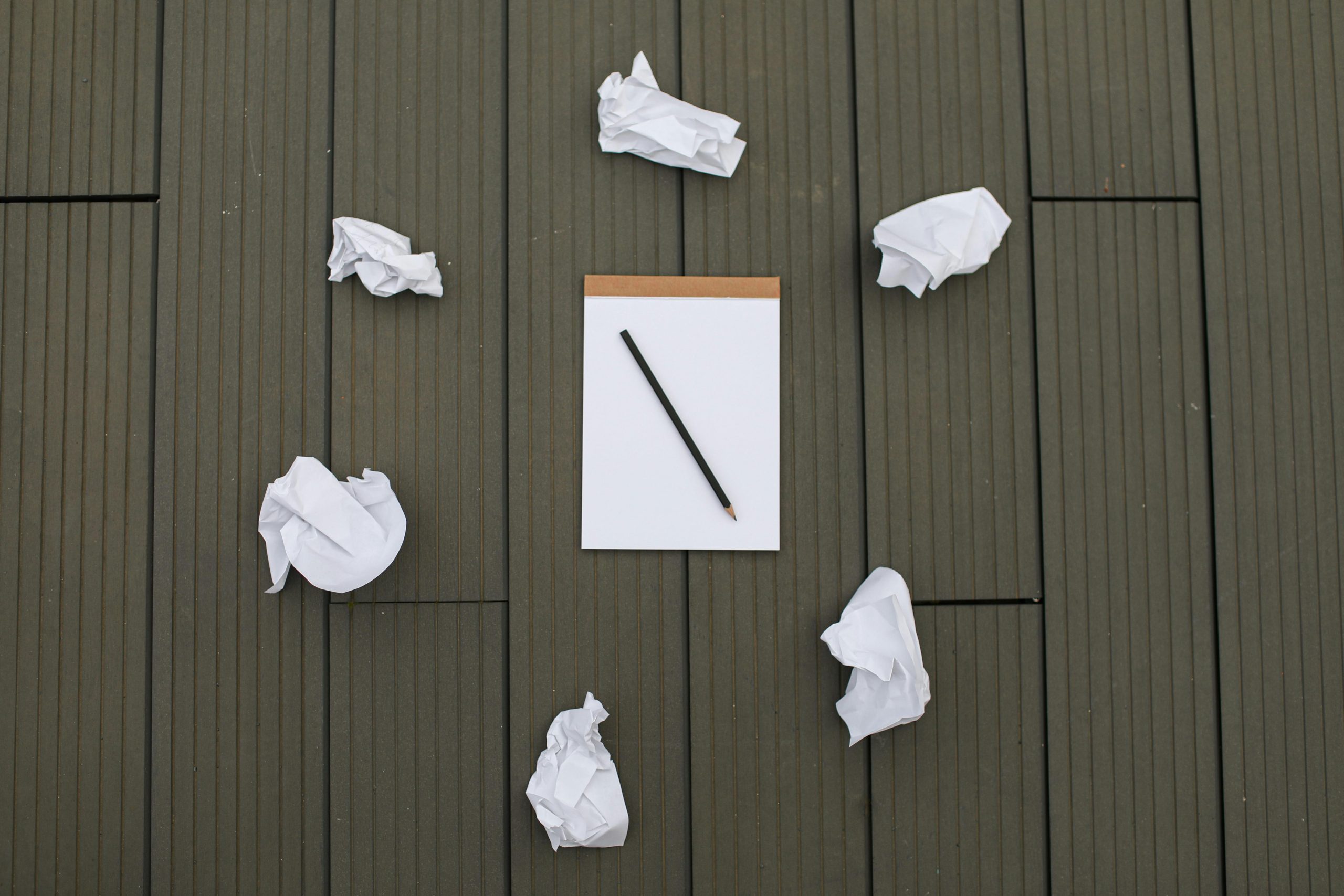You’ve felt it, right? That creeping sense of dread as your to-do list grows longer, even as the hours in the day seem to shrink. You guzzle coffee, try every new time-management app, and promise yourself that this weekend will be the one you finally get caught up.
But then life happens. You get distracted. You work late, sacrificing sleep and sanity, only to wake up the next morning feeling just as far behind, but now with a side order of exhaustion and guilt.
We’ve been sold a lie about productivity. We’re told it’s about doing more, faster, pushing through the fatigue, and grinding until we drop. We idolize the 80-hour workweek and the “hustle culture” gurus who preach relentless effort.
But what if I told you that the real secret to getting more done isn’t about working harder? What if the key isn’t about cramming more into your life, but about working smarter, with more intention and, counterintuitively, with more rest?
This isn’t about another life-hack or a magic bullet. It’s about a fundamental shift in how you think about your energy, time, and attention. This is the real Productivity Formula: a sustainable, human-paced approach to achieving what matters without sacrificing your wellbeing on the altar of “busy.”
The Great Burnout: Why “Pushing Through” is a Trap

Before we build the new, we have to understand why the old way is broken. Burnout isn’t just a fancy word for being tired. It’s a state of emotional, physical, and mental exhaustion caused by prolonged stress. It’s the system crashing.
Think of your energy like the battery on your phone. The “hustle” mentality is like using every app at once, with the screen on full brightness, while refusing to plug it in. Eventually, it will die. And a dead phone is useless to anyone.
When you’re burned out:
- Everything feels harder. Simple tasks require monumental effort.
- You become cynical and detached. You stop caring about work you once loved.
- Your performance plummets. The very thing you were trying to boost by working harder is now in freefall.
- Your health suffers. Sleep problems, a weakened immune system, and anxiety become constant companions.
The “push through” model is a short-term strategy with catastrophic long-term costs. The real Productivity Formula is designed to keep your battery charged, so you can consistently perform at a high level, day after day, year after year.
The Three Pillars of the Productivity Formula

Forget complex systems with a hundred rules. Sustainable productivity rests on three core pillars. Master these, and you’ll transform not just your output, but your entire experience of work and life.
- Energy Management (Your Fuel)
- Focus Management (Your Lens)
- System Management (Your Engine)
Let’s break them down.
Pillar 1: Energy Management: You’re a Human, Not a Machine
Time is finite. We all get the same 24 hours. But energy? Energy is renewable and expandable. An hour spent working when you’re feeling alert, creative, and positive can achieve more than three hours spent when you’re drained, distracted, and resentful. The first step to getting more done is to manage your energy, not your time.
A. The Unbeatable Power of Sleep
This is the most boring, unsexy, and absolutely non-negotiable part of the formula. If you’re sacrificing sleep to be “productive,” you are fundamentally undermining your efforts.
Sleep is not downtime. It’s maintenance time. While you sleep, your brain:
- Consolidates memories: Moving short-term learning into long-term storage.
- Solves problems: Ever gone to bed with a problem and woken up with the solution? That’s your brain working its magic.
- Clears out metabolic waste: Literally washing away the toxins that build up during the day.
- Restores cognitive function: Replenishing your willpower, focus, and emotional resilience.
Action Step: Protect your sleep like your career depends on it—because it does. Aim for 7-9 hours. Create a “wind-down” ritual: no screens an hour before bed, read a book, keep your room cool and dark. Think of sleep as your most important work task of the day.
B. Move Your Body, Boost Your Brain
You don’t need to train for a marathon. The goal here isn’t to become an athlete; it’s to get blood and oxygen flowing to your brain.
Physical activity:
- Reduces stress by burning off cortisol and adrenaline.
- Boosts creativity. A walk, especially in nature, can unlock creative blocks better than staring at a screen for another hour.
- Improves mood by releasing endorphins.
- Increases energy levels in the long run, counteracting fatigue.
Action Step: Schedule movement like a meeting. A 20-minute walk, a short bike ride, some stretching, or a quick home workout. The best time is often when you hit an afternoon slump—instead of reaching for another coffee, go for a 10-minute walk.
C. Fuel the Machine: You Are What You Eat

What you eat directly impacts your energy and focus. A heavy, sugary lunch can send you into a cognitive coma for the next two hours.
- Prioritize Protein & Complex Carbs: They provide sustained energy release, unlike the spike-and-crash of simple sugars.
- Stay Hydrated: Dehydration is a prime cause of afternoon fatigue and headaches. Keep a water bottle on your desk.
- Be Smart with Caffeine: Use it as a strategic tool, not a life-support system. Avoid caffeine in the late afternoon and evening as it can seriously disrupt your sleep quality.
Action Step: Don’t overcomplicate it. For one week, just notice how different foods make you feel an hour or two after eating. Then, make small swaps.
D. The Rhythm of Work and Rest

Human beings are not designed for linear, 8-hour stretches of focused work. We operate in ultradian rhythms—cycles of about 90 minutes where we naturally move from high alertness down into a physiological trough.
Trying to power through these troughs with willpower is a recipe for burnout. The solution is to build deliberate rest into your day.
The Pomodoro Technique is a perfect example:
- Work on a single task for 25 minutes.
- Then, take a mandatory 5-minute break. Actually take it. Look away from the screen, stretch, get some water.
- After four cycles, take a longer break of 15-30 minutes.
This isn’t slacking. This is strategic recovery. It allows your brain to recharge, leading to higher sustained focus over the long haul.
Pillar 2: Focus Management: Taming the Attention Thieves

In a world of pings, dings, and endless scrolling, our attention is the most valuable resource we have. Protecting it is a superpower.
A. The Myth of Multitasking
Let’s kill this once and for all: Multitasking is a lie. Your brain cannot focus on two cognitively demanding tasks at once. What it’s actually doing is “task-switching”—rapidly toggling back and forth.
Every time you switch—from your report to a text message and back again—you incur a “switching cost.” It takes time and mental energy for your brain to re-orient itself. Studies show this can make you up to 40% less productive and significantly increase the number of mistakes you make.
Action Step: Embrace monotasking. Commit to doing one thing at a time. This feels slow at first, but the depth and quality of your work will skyrocket.
B. Declaring War on Distractions
You can’t rely on willpower alone to resist distractions. You need to build a fortress around your focus.
- Phone on Silent and Out of Sight: This is the big one. Put it in another room, or at least face-down and in Do Not Disturb mode.
- Master Your Notifications: Turn off all non-essential notifications on your phone and computer. Every ping is an invitation to abandon your important work for something trivial.
- Create a “Deep Work” Zone: Use tools like website blockers (Freedom, Cold Turkey) during your focused work sessions. Communicate to others (if you’re at home or in an office) that you are not to be disturbed for a set period.
C. The Magic of Time Blocking
A to-do list tells you what to do. A calendar tells you when to do it. Time blocking is the simple practice of scheduling your tasks like appointments.
Instead of having a nebulous list that causes anxiety, you create a concrete plan for your day.
- At the start of the week (or the night before), look at your master task list.
- Block out time in your calendar for your most important tasks. Be realistic about how long things take.
- Also block out time for email, meetings, and, crucially, breaks.
This does two things: It forces you to be realistic about your time, and it eliminates the constant, draining question of “What should I be working on right now?” The calendar has already decided for you.
Pillar 3: System Management: Building Your Productivity Engine
Willpower is a limited resource. A good system makes doing the right thing easy and the wrong thing difficult. It automates your success.
A. The Sacred “Second Brain”: Get It Out of Your Head
Your brain is for having ideas, not for holding them. Trying to remember every task, idea, and errand creates immense “cognitive load,” which is a fancy term for mental clutter that stresses you out and makes it hard to focus.
You need a “Second Brain”—a trusted system outside of your head to capture everything.
This can be:
- A physical notebook (like a Bullet Journal).
- A digital app (like Todoist, Asana, or Notion).
- A simple notes app on your phone.
The key is the capture habit. The moment a task or idea pops into your head, you capture it in your system immediately. This frees up your mental RAM and gives you incredible peace of mind.
B. The Power of “The Next Action”
A task like “Plan Mom’s birthday” is vague and intimidating. It sits on your list, causing anxiety because you don’t know where to start.
Break everything down into a “Next Action.” This is the very next, physical, visible step you need to take.
- Vague Task: “Plan Mom’s birthday”
- Next Action: “Text my sister to see if she’s free for a call this weekend to brainstorm ideas.”
See the difference? The next action is clear and actionable. You can’t “plan a birthday,” but you can absolutely “text my sister.” This makes starting infinitely easier.
C. The Weekly Review: Your Command Center
A system that isn’t maintained will decay. The Weekly Review is a sacred, non-negotiable time (usually 30-60 minutes on a Friday afternoon or Sunday evening) to reset your system and your mind.
During this time, you:
- Collect & Process: Gather all your scraps of paper, digital notes, and mental loose ends and get them into your Second Brain.
- Review: Look over the past week. What got done? What didn’t? What’s coming up next week?
- Update: Clear out your task lists, update your calendar with new time blocks, and define the “Next Actions” for your upcoming projects.
The Weekly Review is what prevents you from feeling like you’re constantly reacting to life. It puts you back in the driver’s seat, calm and in control.
Putting It All Together: A Day in the Life of the Productivity Formula

This might all sound good in theory, but what does it look like in practice? Let’s imagine a day:
- 7:00 AM: Wake up after 8 hours of sleep. No phone check for the first 30 minutes. Instead, drink a glass of water, maybe do 5 minutes of stretching, and eat a breakfast with protein.
- 9:00 AM – 12:00 PM (Deep Work Block): Phone is in another room on Do Not Disturb. Computer notifications are off. You work on your most important project for the day, using the Pomodoro Technique (90 minutes of work, 20-minute break). You are monotasking.
- 12:00 – 1:00 PM (Lunch Break): An actual break. You step away from your desk. You eat lunch without looking at a screen. You might go for a short walk outside.
- 1:00 – 3:00 PM (Shallow Work Block): This is for smaller tasks: answering emails, scheduling meetings, doing administrative work. You’ve time-blocked this, so you don’t feel guilty for not doing “deep work.”
- 3:30 PM (Slump Time): The afternoon energy dip hits. Instead of fighting it with sugar and caffeine, you lean into it. You take your scheduled 15-minute break. Maybe you close your eyes for 10 minutes, or listen to one song with your eyes closed.
- 5:00 PM (Shutdown Ritual): You end your workday deliberately. You do a quick 5-minute review of what you accomplished, write down your top 3 tasks for tomorrow, and close your laptop. You consciously tell yourself, “Work is over.” This creates a psychological boundary.
- Evening: You relax, connect with family or friends, pursue a hobby, and wind down for sleep without screens.
Notice the themes? Intentionality, Rhythm, and Renewal. It’s not a rigid, joyless schedule. It’s a flexible framework designed to maximize your human potential.
The Final, Most Important Ingredient: Self-Compassion

You will have days where this all falls apart. You’ll sleep poorly, get sucked into a social media vortex, and abandon your time blocks. That’s okay. That’s being human.
The Productivity Formula is not a stick to beat yourself with. It’s a compass, not a GPS. It gives you a direction to move in. When you have a bad day, the goal isn’t to spiral into self-criticism. The goal is to simply notice what happened without judgment, and gently guide yourself back to the path at the very next opportunity—your next meal, your next task, or the next day.
Be kind to yourself. The goal isn’t perfect productivity. The goal is a meaningful and sustainable life where you can do great work without losing yourself in the process.
So start small. Pick one thing from this article. Maybe it’s going to bed 15 minutes earlier tonight. Maybe it’s turning off your notifications for one focused hour tomorrow. Maybe it’s finally writing down all the stuff swirling in your head.
Build your formula one brick at a time. You’ll be amazed at how much more you can accomplish when you stop fighting against your own human nature and start working with it.






